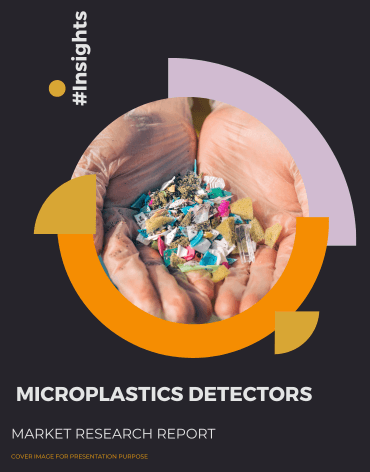Microplastics Sensors: A New Frontier in Environmental Monitoring

Plastic pollution has become a global environmental crisis with profound consequences for ecosystems, human health, and the economy. One of the most insidious components of this pollution is microplastics, tiny plastic particles measuring less than 5 millimeters in size. Microplastics pose a significant threat to aquatic life and can even enter the human food chain. To address this challenge, researchers and innovators have developed microplastic sensors, groundbreaking devices that play a pivotal role in detecting and monitoring these minute plastic fragments.
1 . Understanding Microplastics
Microplastics are ubiquitous in our environment, originating from various sources such as broken-down plastic waste, microbeads in personal care products, and synthetic fibers shed from textiles. These minuscule plastic particles are found in oceans, rivers, lakes, soil, and even the air we breathe. Their presence raises concerns about the long-term ecological and health implications.
The OECD's latest report highlights a concerning trend: nearly half of the world's plastic waste can be traced back to member countries within the organization. On an annual basis, the per capita production of plastic waste shows substantial disparities, with the United States leading at 221 kg, European OECD nations averaging 114 kg, and Japan and Korea maintaining a lower average of 69 kg.
The primary culprit behind plastic pollution remains inadequate practices in the collection and disposal of larger plastic items, categorized as macroplastics. Nevertheless, the escape of microplastics, which are minuscule synthetic polymers measuring less than 5 mm in diameter, is emerging as a noteworthy and escalating environmental issue. These microplastics originate from various sources, including industrial plastic pellets, synthetic textiles, road markings, and the wear and tear of tires, contributing significantly to the problem.
The Need for Microplastic Sensors
Traditional methods of detecting and quantifying microplastics involve labor-intensive, time-consuming processes like manual sample collection and analysis under a microscope. These methods are often inadequate for large-scale monitoring and may not provide real-time data. This is where microplastics sensors step in, offering a faster, more efficient, and accurate means of detecting and tracking microplastics in various environments.
2 . How Microplastic Sensors Work
Microplastic sensors are designed to identify and quantify microplastic particles using a variety of techniques:
Spectroscopy: Some sensors employ techniques like Raman spectroscopy or Fourier-transform infrared (FTIR) spectroscopy to identify the chemical composition of particles, allowing for the distinction between plastic and non-plastic materials.
Electrochemical Sensors: These sensors use electrodes to measure changes in electrical properties when microplastic particles are present. The electrical response can be correlated with the concentration of microplastics.
Optical Sensors: Optical sensors utilize microplastics' light absorption, fluorescence, or scattering properties to detect and measure their presence.
Microscopy and Imaging: Advanced imaging techniques, including microscopy and machine vision, can identify and count microplastics in samples.
3 . Applications of Microplastics Sensors
Microplastic sensors have a wide range of applications:
Environmental Monitoring: They assess the extent of microplastic pollution in aquatic ecosystems, sediments, and soils, providing valuable data for conservation efforts and policy-making.
Water Quality Assessment: Microplastics sensors are employed to evaluate the quality of drinking water sources and wastewater treatment processes to ensure the removal of microplastics.
Indoor Air Quality: These sensors can detect microplastics in indoor environments, especially in areas where microfiber release from textiles is a concern.
Food Safety: Microplastics sensors help monitor the presence of microplastics in food products, ensuring consumer safety and compliance with regulations.
Research and Education: Microplastics sensors enable scientists and educators to engage in meaningful research and raise awareness about the issue of plastic pollution.
(A) Microplastic Detector in Water:
- Filtration: Water samples are passed through a fine filter (e.g., pore size of 0.45 micrometers) to capture microplastics. The filter is then examined under a microscope to identify and count the particles.
- Spectroscopy: Techniques like Fourier-transform infrared spectroscopy (FTIR) and Raman spectroscopy can be used to analyze water samples for microplastic content by identifying their chemical composition.
- Fluorescence-based Techniques: Some microplastics can be labeled with fluorescent dyes, making them easier to detect and quantify under a fluorescence microscope.
- Automated Imaging: Automated image analysis systems can be employed to process large volumes of water samples and detect microplastics based on size, shape, and color.
(B) Microplastic Detector in Soil:
- Digestion and Separation: Soil samples are treated with a chemical digestion solution to break down organic matter, leaving behind microplastics. Density separation techniques like floatation are then used to isolate microplastics from soil particles.
- Spectroscopy: Similar to water, spectroscopic methods like FTIR can be used to analyze the chemical composition of microplastics in soil samples.
- Microscopy: Microscopy techniques, including stereomicroscopy and electron microscopy, can be used to visually identify and quantify microplastics in soil.
- Density Separation: Techniques such as density gradient centrifugation can separate microplastics from soil based on differences in density.
(C) Microplastic Detector in Air:
- Air Sampling: Airborne microplastics can be collected using specialized air samplers, which use filters or impaction to trap particles from the air.
- Spectroscopy: Spectroscopic methods can also be used to analyze the chemical composition of airborne microplastics collected on filters.
- Microscopy: After collection, filters can be examined under a microscope to identify and quantify microplastics.
- Raman Spectroscopy: Portable Raman spectroscopy devices are increasingly used to detect microplastics in real-time, making them suitable for outdoor air quality monitoring.
4 . Challenges and Future Developments
While microplastic sensors offer immense promise, they are not without challenges:
Standardization: The lack of standardized methods for microplastic detection hampers consistency in data collection and comparison.
Sensitivity and Selectivity: Improvements are needed to enhance the sensitivity and selectivity of sensors, ensuring accurate detection in complex environmental matrices.
Cost: Developing affordable sensors accessible to researchers, environmental organizations, and regulatory bodies is essential for widespread adoption.
Integration: Incorporating microplastic sensors into existing monitoring systems and infrastructure is crucial for comprehensive pollution assessment.
5 . The Future of Microplastics Sensors
The development of microplastic sensors represents a significant leap forward in addressing the global problem of plastic pollution. As technology advances and more research is conducted, these sensors will become even more accurate, affordable, and accessible. Additionally, the integration of microplastic sensors into autonomous monitoring platforms and real-time data collection systems will revolutionize our ability to combat plastic pollution effectively.






